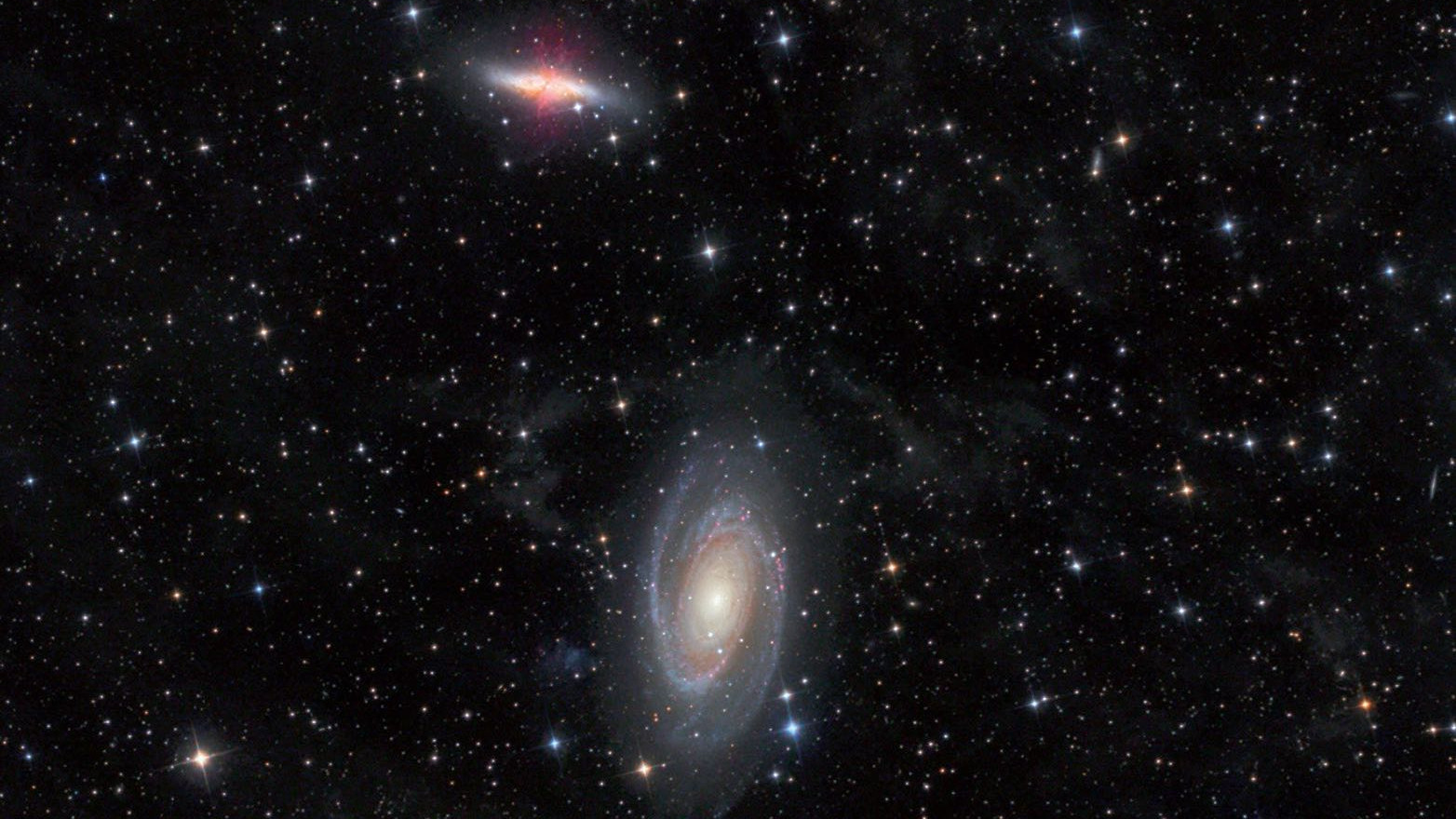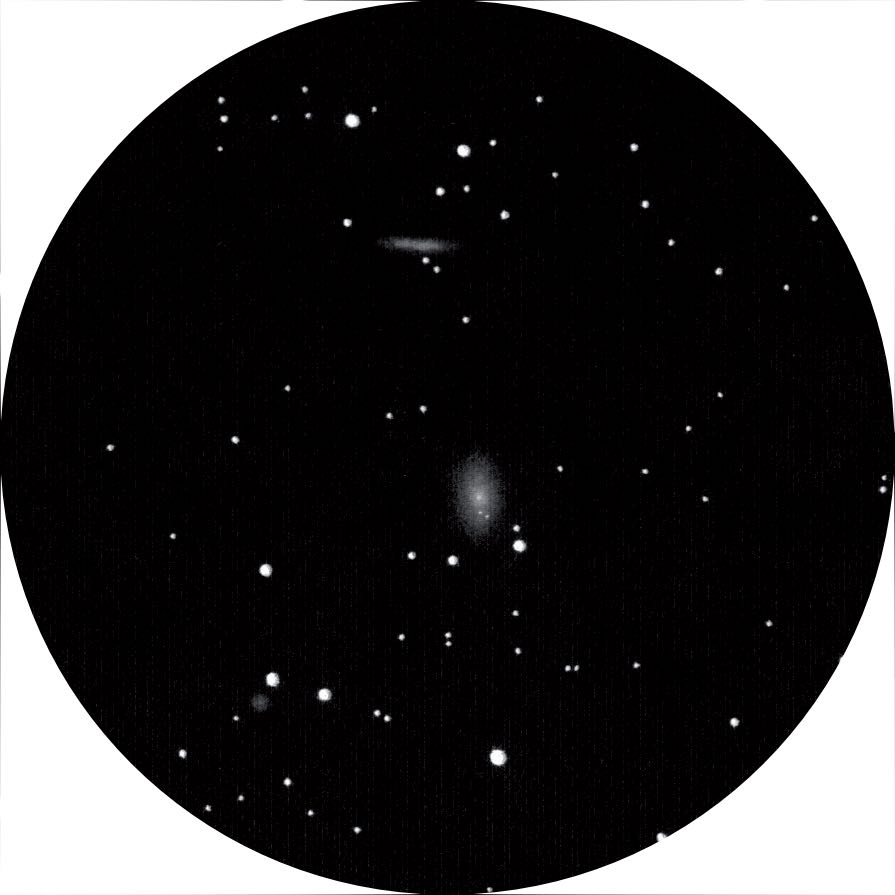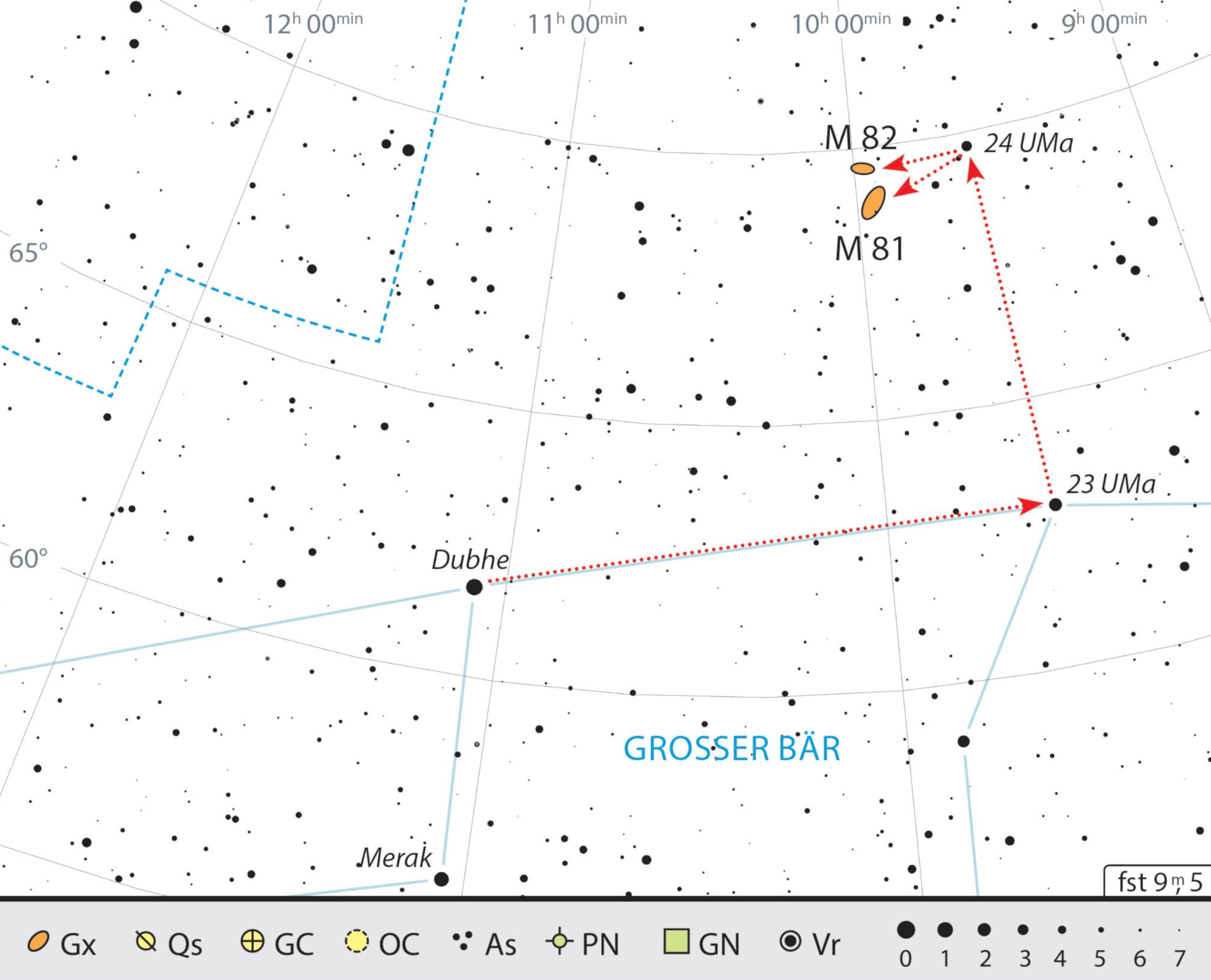The perpendicular galaxy pair M81/M82
This pair of galaxies is one of the most beautiful observation targets in the northern night sky – both fit into the field of view of a 2" eyepiece.
 Galaxies M81 and M82 in the the constellation of Ursa Major captured with a 4.5-inch Newtonian telescope with a focal length of 440 mm. Michael Deger / CCD Guide
Galaxies M81 and M82 in the the constellation of Ursa Major captured with a 4.5-inch Newtonian telescope with a focal length of 440 mm. Michael Deger / CCD Guide Drawing of M81 and M82 taken using a 4-inch Dobsonian at 16× magnification. Peter Kiss
Drawing of M81 and M82 taken using a 4-inch Dobsonian at 16× magnification. Peter KissThe galaxy pair M81/M82 is 11.8 million light-years away from us and one of the most beautiful observation targets in the northern night sky. Since the two galaxies are located in Ursa Major, they do not set in our latitudes. For this reason, the pair is also one of the most popular observation targets, visited regularly by many star fans. The best observation time for this is in spring, when the galaxy pair is high in the sky.
It is best to start at the tail of the Big Dipper at the star α UMa (Dubhe). Some 10° west of α UMa, you will find 23 UMa. From there, pan around 4.5° to the north-west, until you get to a group of magnitude 4 to 5 stars σ1, σ2 and ρ UMa. Around 3.5° north-east of this you will find 24 UMa, a mag 5 star. The galaxy pair M81/M82 is located almost 2° east-south-east of here. M81 is visible in the finder as a small nebulous speck.
Bode’s Galaxy and the Cigar Galaxy
Messier 81 is at the centre of a small group consisting of at least ten galaxies, including Messier 82. This so-called M81 Group is very similar to our Local Group. The galaxies Messier 81 and 82 are real neighbours and are currently moving away from each other. Johann Elert Bode discovered both galaxies from Berlin on New Year's Eve in 1774. On 9 February 1781, Charles Messier added the galaxy pair to his catalogue of nebulae allocating them numbers M81 and M82.
The galaxy M81 appears quite bright and oval in binoculars, and in a telescope it appears large with a diffuse, uniformly diminishing halo and slightly elongated form, running from north to south. The central area is also slightly elongated and bright with a star-like core. The spiral structure is visually difficult to identify, but it can be seen under a dark country sky in a larger telescope at low magnification. Then you will see two spiral arms coming out of the diffuse halo, winding some 180° around the core. M81 is also known as Bode’s Galaxy in honour of the man who discovered it.
 Finding chart of M81 and M82 in the constellation of Ursa Major. J. Scholten
Finding chart of M81 and M82 in the constellation of Ursa Major. J. ScholtenPerpendicular galaxy pair
The galaxy M82 is perpendicular to M81 and looks completely different. It has been deformed by interactions with M81 and is positioned edge-on. Due to its elongated shape it is also known as the Cigar Galaxy. The galaxy has a high surface brightness and can be seen in binoculars as a bright and elongated nebulous object running from east to west. In a small telescope with high magnification, it appears speckled. In larger telescopes, a band of dust becomes visible, which runs vertically across the centre.
It is particularly fascinating to capture both galaxies together in the eyepiece. This can be achieved with a true field of view from 2° and a magnification of about 20-30×. Then you can see that the galaxies are perpendicular to each other, M81 as an oval nebulous speck and M82 as a narrow strip of light.
Author: Michael Feiler / Licence: Oculum-Verlag GmbH
